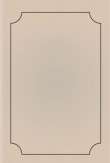You are here
قراءة كتاب Home Geography for Primary Grades
تنويه: تعرض هنا نبذة من اول ١٠ صفحات فقط من الكتاب الالكتروني، لقراءة الكتاب كاملا اضغط على الزر “اشتر الآن"
therefore we see no grass, nor flowers, nor cattle, nor horses, nothing but dry, burning sand, rocks, or gravel. We are in a desert. But we are so thirsty and tired!
No water to drink, no shade from the burning sun! Suddenly, in the midst of the desert, we come to a beautiful grassy spot. There is a cluster of date-palm trees, and, better still, a well or a spring of fresh water. This pleasant spot in the desert is called an oasis. Here we may quench our thirst, and rest beneath the shade of the trees.
 |
|
THIS PLEASANT SPOT IN THE DESERT IS CALLED AN OASIS
|
An oasis is a fertile spot in a desert. What does fertile mean? When do we say land is fertile? When barren? When desert?
Find a picture of a palm tree, and try to draw it.
If we were really in a desert, we might see a company of merchants carrying goods to sell in the countries they visit. Such a company is called a caravan. The goods are packed in bundles, which are carried on camels' backs. The camel can live for a long time without drinking, and can carry a heavy load of merchandise a long distance. It is sometimes called the ship of the desert.
Why do travelers use camels to cross the desert? Why do they not use horses? If you can not find answers to these questions in your books at home, ask your teacher about them.
You have seen a small whirlwind in the street. The leaves flew round and round, the dust whirled along in clouds. Trees are sometimes torn from the ground, and houses overturned, by a strong wind.
Now think of a wind-storm in the desert. A loud, rustling noise is heard. Great clouds of fine sand are lifted into the air--clouds which darken the sun! Travelers must at once jump from their camels, cover themselves with their cloaks, and lie flat on the ground.
The poor beasts will close their eyes and nostrils, and kneel with their backs to the wind until the storm has passed over.
Thankful will the travelers be if none of them are buried in the sand.
The land is not always level like a plain. In some places it is high and uneven. We all know what a hill is. It is land a little higher than the surrounding country.
Is there a hill near where you live? Let us walk to the top, and stand on its summit. We will start from the foot or base of the hill. Now we have climbed its steep, rough sides or slopes. Was the ascent difficult? Is the view from the top fine?
 |
|
WHAT CAN YOU SEE FROM THE TOP OF THE HILL?
|
What can you see from the top of the hill--meadow, river, lake, town? What grow on the hill? What live on the hill?
Which part of a hill is called the base, or foot? The slope, or sides? The top, or summit?
Give two names for the lowest part of a hill. Two for the highest part. Two for the part between the highest and lowest parts.
Parts of the land very much higher than the surrounding country are called mountains. Mountains are much higher than hills. Have you ever seen a steeple one hundred feet high? A mountain is as high as twenty such steeples, one on the top of the other. How high the mountains must be!
Some mountains reach away above the clouds. Their white tops seem to touch the sky. A man on the summit of one saw the clouds beneath his feet, while the sun shone where he stood. When it lightened he saw the flash far below him.
Is it warm or cold at the tops of mountains? With what are many high mountains covered, even in summer?
The land between mountains or hills is called a valley. Is there a valley near here? What do you call the ground on either side?
Would you like best to live on the mountains or in the valley? Why?
Are mountains of any use?
Yes, hills and mountains are of very great use. They make the earth more beautiful. Tops of high mountains are so cold that they turn the clouds into drops of water which fall as rain or snow. Then mountains give rise to rivers which make the valleys beautiful with grass and flowers. Mountains do much good to some countries by keeping off cold winds. They also give us coal and iron and other minerals which we find so useful.
 |
|
THINK OF A REAL VALLEY BETWEEN MOUNTAINS.
|
Here is a picture. What do you call the very high land on the right and on the left? The long, narrow piece of land between the two mountains?
When you look at this picture you must think of a real valley between mountains.
Bring pictures of hills and mountains to school; if you can find them.
If you had a molding-board and a few quarts of sand; you might represent hills and mountains with valleys between. Think of a real hill while you mold.
Draw on your slate a hill you have seen with a little of the surrounding country.
Write:
A long, narrow piece of land between hills and mountains is called a valley.
A hill is land a little higher than the country about it.
A mountain is land that rises to a very great height above the country about it.
|
|
Of what use is rain? Of what use is snow? Of what use is wind?





